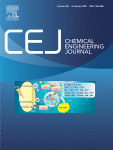|
Autores/as
Jaén-Gil, Adrián; Buttiglieri, Gianluigi; Benito, Aleix; Mir-Tutusaus, Josep Anton; Gonzalez-Olmos, Rafael ; Caminal, Glòria; Barceló, Damià; Sarrà, Montserrat; Rodriguez-Mozaz, Sara ; Caminal, Glòria; Barceló, Damià; Sarrà, Montserrat; Rodriguez-Mozaz, Sara
|
Abstract
The transformation products (TPs) of water contaminants generated during wastewater treatment can sometimes be equally or even more hazardous than the parent compounds. Therefore, for a comprehensive assessment of removal efficiency of a water treatment technology, it is mandatory to monitor not only the pollutants but also of their TPs. However, this type of evaluation studies is lacking in the case of water combined treatments. In this study, the elimination of metoprolol (MTP), metoprolol acid (MTPA) and the TPs generated was evaluated in pure water and hospital wastewater (HWW) using UV/H2O2 before and after fungal (FG) or conventional activated sludge (CAS). The major transformation pathways were suggested in terms of transformation of the parent compounds through bio-transformation and photo-transformation mechanisms. The results reveal an extended removal of MTP, MTPA and TPs after UV/H2O2 single experiment treating spiked pure water at 2.5 mg/L, without increasing the treated effluents toxicity. However, combined treatments were required to achieve similar removal percentages in spiked real HWW at 2.0 µg/L: while AOPs combined with FG exhibited lower removal efficiencies with generation of persistent intermediates (such as α-HMTP and TP240), AOPs combined with CAS attained the higher persistent TPs removal. In particular, AOP + CAS was classified as the most effective combination for HWW with the highest removal of the parent compounds (86% for MTP and 100% for MTPA), of the intermediates generated (up to 85%) and with a low presence of toxic TPs (such as O-DMTP). This study demonstrates that comprehensive evaluation of the intermediates generated along water treatment technologies is highly recommended to successfully evaluate their removal efficiencies.
|

WoS
Scopus
Altmetrics
 
|
